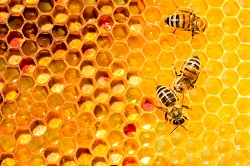Falling honeybee numbers inspire heat treatments and smart beehives
The number of honeybees, wild bees and other pollinators has been falling in Europe in the last few decades. Pests, pathogens, pesticides and climate change have all driven bee mortality to worrying levels. Currently, Europe has about 13 million less honeybee colonies than are needed for proper crop pollination. The severe decline in honeybees has inspired many efforts across Europe to combat the problem. Two businesses earned EU funding through their innovative apicultural solutions: a chemical-free pest control method supported by the HApi project, and a connected beehive concept that received aid from BEE LABEL. Controlling the Varroa mite The pest control method proposed by an Austrian engineering consultancy focused on combatting infestations of the Varroa mite and the debilitating deformed wing virus it carries. The parasitic mites infiltrate hives by attaching themselves to the backs of adult bees. They then slip into the brood cells, and once the cells are sealed, they begin to feed on the developing bees. Within a few days, the mother mites begin to lay eggs, which mate once they mature. By the time the baby bee develops and leaves its cell, as many as three fertilised mites emerge with it, continuing the cycle. A large Varroa mite infestation is capable of killing entire bee colonies through the diseases and viruses they transmit. Most treatments deal with the problem by using chemicals to keep mite levels low. But to avoid the chemicals’ adverse effect on wax quality and the taste of honey, hives are only treated after the honey is harvested. Waiting, on the other hand, poses its own problems: climate change has led to an earlier bee breeding season, which gives the mites more time to reproduce. The company’s innovative method makes treatment possible early in the season, since it uses no chemicals. Its effectiveness is based on a key fact. During the stage when the bees metamorphose from larvae to mature bees, they’re able to withstand very high temperatures. This is something the parasites cannot do. The hive frames containing the brood cells are inserted into a device, the Varroa Controller. There, the sealed brood cells are exposed to temperatures of 40-47 °C for 2 hours. This doesn’t harm the larvae in any way, but the mites die within hours. Connected beehives A French start-up has tackled the declining bee population problem from a different angle. They’ve developed a remote monitoring system, called Bee Label, which alerts beekeepers about any problems with their hives. The smart hive’s temperature, brightness, humidity, orientation and stability on the ground are monitored using sensors. A mass sensor keeps beekeepers up to date on colony size and honey production. Weather changes influencing bee behaviour are also recorded through an atmospheric pressure feature. The information is sent to the hive owner by email or text. The system also has a solution for the growing problem of beehive theft. An anti-theft alert notifies beekeepers if the hives are being moved. BEE LABEL (Bee Label: A new remote beehive surveillance for better bee health and secured pollination) is working on improving its system by adding new sensors, cameras and solar panels. Now closed, HApi (HApi - Hyperthermia in Apiculture - A new product against the Deformed Wing Virus of honey bees) focused on hyperthermia as a chemical-free pest control method. For more information, please see: Bee Label website and Varroa Controller website
Countries
Austria, France



